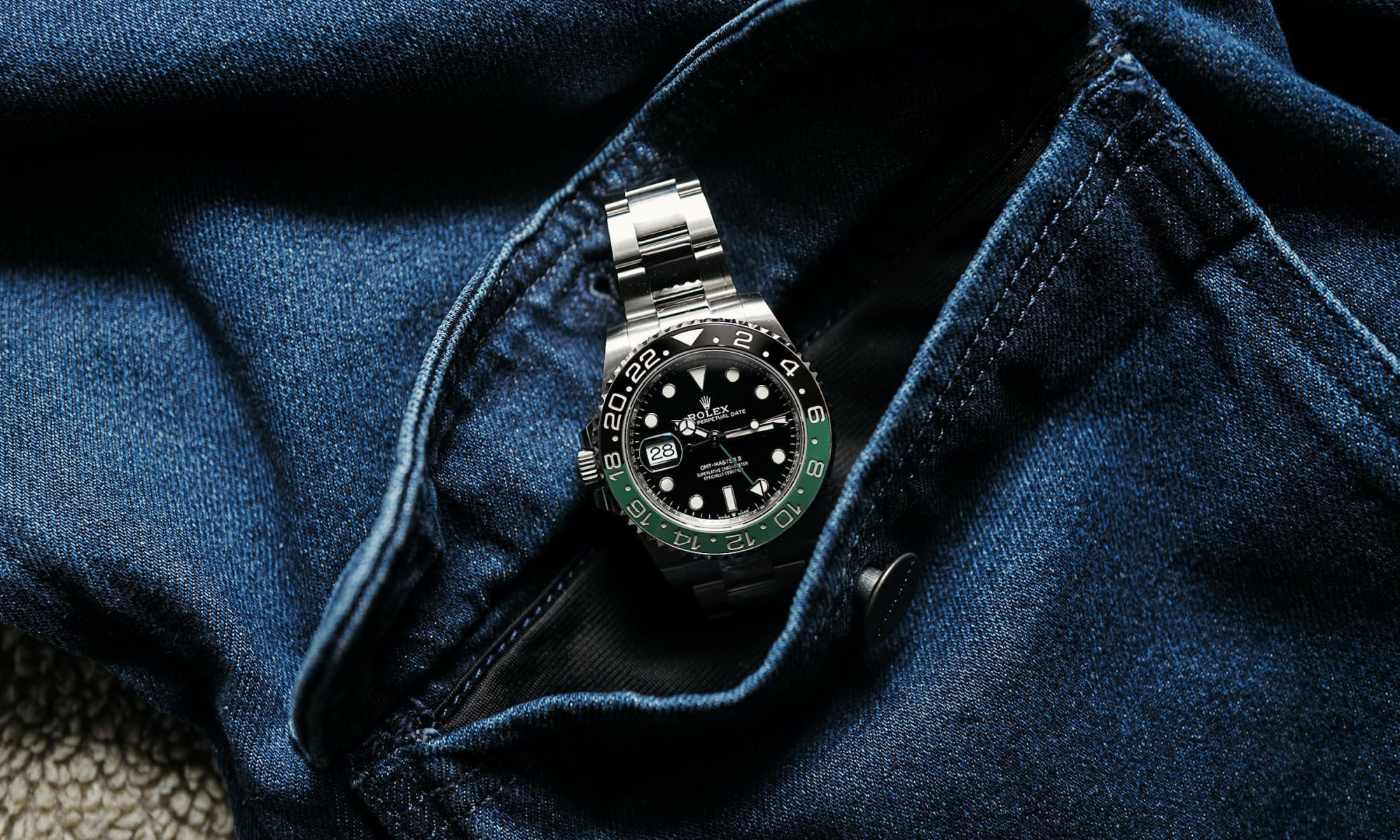Here is the story: Dr. Crott Auctioneers is about to auction what COULD be (and that “could” is extremely important to keep in mind…) a classic fake Rolex Rattrapante Pocket Watch. This combination; Rolex / Rattrapante / Pocket Watch is something that has never been seen before, which is extraordinary to say the least considering the immense literature about Rolex. So what do we have here? Potentially one of the rarest and most important Rolex watches ever? A superb example of limited (maybe unique) production by the Crown? Or an example of re-casing work done by one of those vintage magicians? What is certain though, is that we are facing a highly interesting mystery (found thanks to watch journalist Gregory Pons).
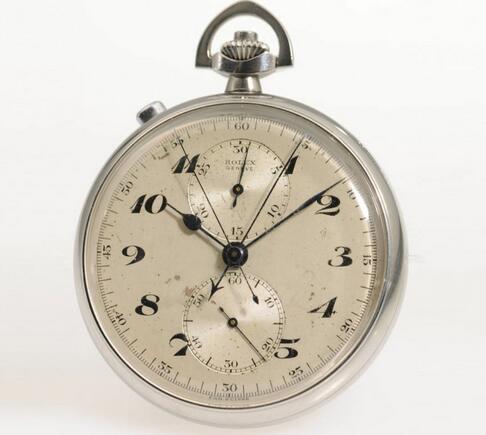
Until now, the only sturdy copy Rolex Rattrapante Chronograph known was the famous ref. 4113, a wristwatch of which only 8 pieces were ever manufactured. These extremely rare watches are auction-stars, easily breaking the 1-million barrier – for example, the 4113 sold by Phillips at the “Start-Stop-Reset” auction, for CHF 2,405,000, to become the most expensive Rolex wristwatch ever sold publicly. The Antimagnetique Reference 4113 was made during the 1940s, in 8 examples, all in steel, and as all Rolex chronographs of that time, it was equipped with an out-sourced movement (Valjoux). However, with the May 6 auction by Dr. Crott coming, we may have a 9th rattrapante chronograph by Rolex… may have.
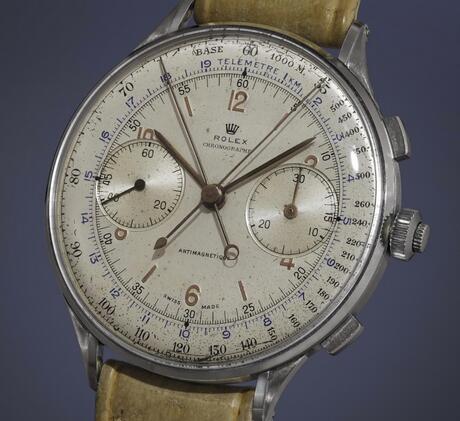
The legendary Rolex 4113, the only known-to-date Rolex Rattrapante Chronograph
What do we have here? Looking at the photos, we can see a very nice, well preserved pocket watch with rattrapante chronograph, externally-sourced movement (usual at that time), with rattrapante bridge engraved “Rolex Genève”. The dial is, of course, printed with Rolex logo. More interestingly, the back of the dial feature a “ZJ” mark, which refers to one of Rolex’s dial-makers. The watch is said to be from 1955 but could most likely be a bit older (the movement seems more 1930s / 1940s) – Rolex sometimes used older ébauches and cased them up later. It bears movement No. 88305 and case No. 2885. The case is steel and measures 51 mm. On the back of the case, we can still see the green sticker that all Rolexes featured when leaving the manufacture. One thing is surprising though, the lack of reference number.
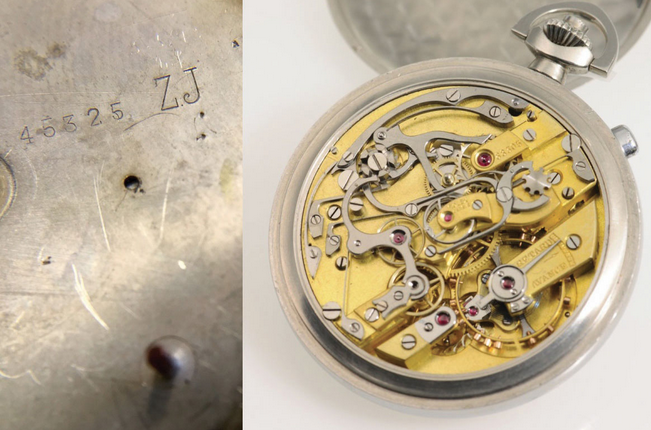
This “ZJ” mark from one of Rolex dial-makers – The split-seconds movement is generic (found in other watches from the same period) but engraved “Rolex Genève”
The main problem with this top replica Rolex Rattrapante Pocket Watch comes from the lack of information, and even more importantly, the complete absence of references. Whatever the literature you search… In all Rolex literature, there is not a single mention of a split-seconds pocket watch by Rolex. Never, nowhere… Dr. Crott, in the description of lot 327, even states “Our enquiries with Rolex came to nothing and no external Rolex specialists were able to help us with any information.”
Another point to mention is that Rolex’s production of pocket watches was extremely low. Only a few were ever manufactured, like for instance the ref. 3068, a chronograph pocket watch – see this version sold by Robert Maron, this version sold by Antiquroum, this version sold again by Antiquorum and finally, this last one sold by Christies. Once again, this low volume of pocket watches produced by Rolex makes us curious and skeptical about the authenticity of such a functional fake Rolex online Rattrapante Pocket Watch.
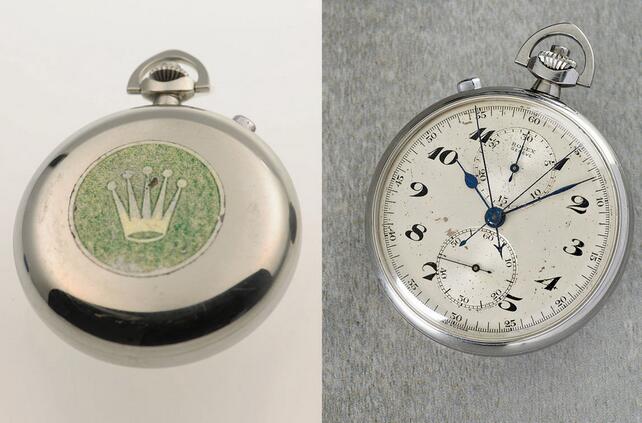
Thus, considering this, there are two possible options. First, the watch is legit and in that case, with its EUR 40,000-60,000 estimation, this could be the deal of the decade. Imagine, an extremely rare or probably unique, unknown, unreferenced, unstudied Rolex watch, furthermore with a rattrapante movement, for the price of a nice (but not exceptional) vintage Daytona. If experts and collectors think this is an authentic watch, the price will explode. Second option, the watch is simply wrong, and in that case, the estimation is also completely irrelevant. However, as explained by Gregory Pons in his article (in French), a third option exist… Suppose main collectors, experts and dealers aren’t confident enough in the pedigree of the watch, one collector, who’s maybe a bit more informed or just more adventurous, could bet on the authenticity of the watch. The person who wins the auction, is able to do more in-depth research once the watch is in his hands and/or in the hands of experts. Suppose they find a way to authenticate the watch, and try to imagine what the price would be in a future auction! Maybe (just maybe) this watch could be a future record-breaker.
